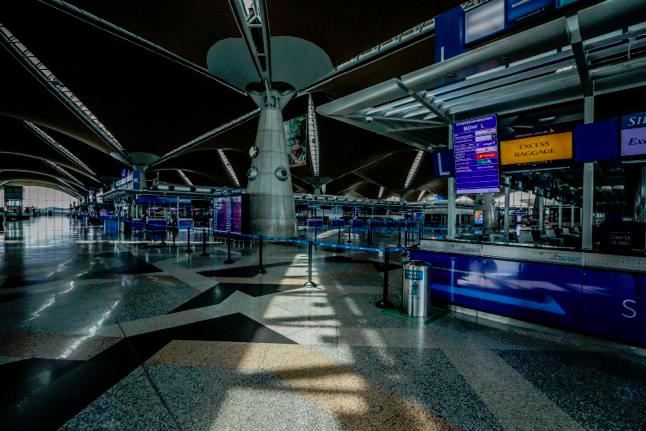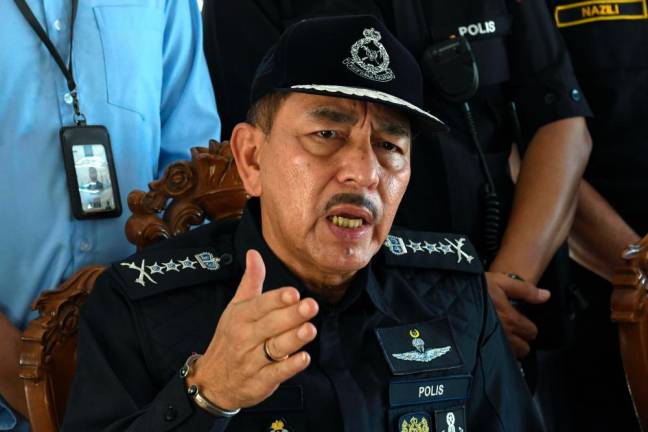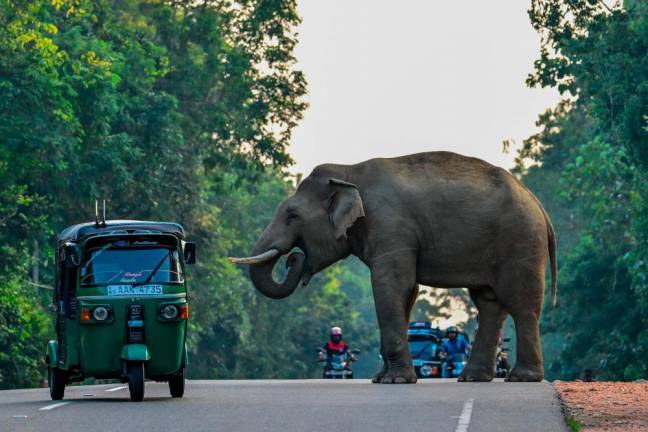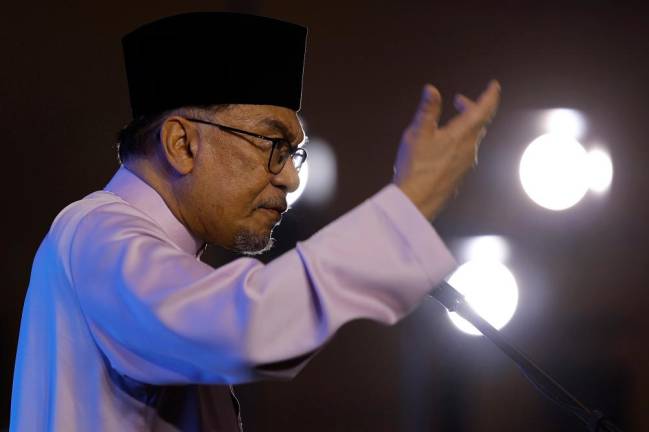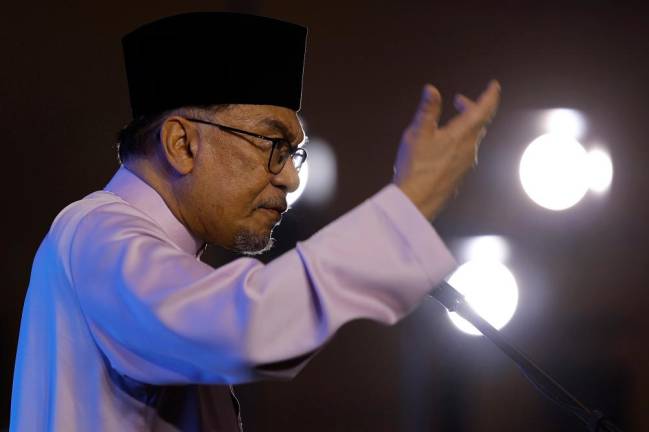LAST month, the website of Malaysia Airports Holdings Bhd (MAHB) displayed an overview of passenger experience in the second half of January 2023, starting with the aerotrain frequency and availability at KL International Airport, where one train operated for 17 hours daily.
The performance standard for baggage to arrive was within 40 minutes, with the service performance at KLIA recording 73% and klia2 90%.
During this period, there were 3,222 flight movements at KLIA and 2,990 at klia2.
There were 46 food and beverage outlets operating at KLIA and 86 at klia2, 144 retail services operating at KLIA and 150 at klia2.
There were 17 complaints of dirty toilets at KLIA and klia2 that were resolved within 25 minutes, three complaints of faulty toilets at kila2 that were resolved within two hours and 50 minutes, five complaints of smelly toilets at KLIA and klia2 that were resolved within 50 minutes and two complaints of wet toilets at KLIA that were resolved within five minutes.
In Malaysia, MAHB manages five international airports at Langkawi, Penang, Sepang, Kuching and Kota Kinabalu.
KLIA would be renamed KLIA Terminal 1 and klia2 as KLIA Terminal 2, and rightly so as there are just terminals at the same airport.
Although MAHB wishes to be a holistic global airport company, it has received brickbats from many arriving passengers trying to make their way from the satellite terminal building to the main terminal building, and vice-versa for departing passengers.
This is due to upgrading work on the aerotrain which will only be completed in March 2025, with only one train running until then.
In the interim, airport buses are operating on the tarmac to ferry passengers round-the-clock.
But the situation was often chaotic during peak hours as many passengers were not aware that buses were available and kept waiting for the train.
Rather than resort to shouting to be heard in a crowd, passengers could easily be directed to buses if prominent signboards were used.
Recently, two trains were deployed but on March 1, one broke down and the other sent to ferry stranded passengers experienced technical difficulties.
As both trains require lengthy repairs, MAHB had to announce that all aerotrain operations have been suspended until further notice.
Sadly, the 114 passengers stranded by the aerotrain breakdown had to walk 400m in the middle of the track to the satellite building in a drizzle, with 10 passengers missing their flights to Padang and Pudong. They were subsequently compensated with new flight tickets.
Undoubtedly, MAHB plays a crucial role in creating the first and last impressions of our country for air travellers that number by many millions each year.
Apart from putting needed facilities and amenities in place, it must also use soft power to become a truly holistic company.
It is likely that most passengers do not have any strong impression of both terminals, treating them as just another airport that they must pass through and hoping to spend the least amount of time possible, especially for arriving passengers.
Great experiences
Those that are familiar with both terminals and are fit, they would walk confidently from the moment they step out of an aircraft, pass through many enticing shops and make their way to queue at the right counter to clear immigration.
After that, they proceed to the correct carousel to retrieve their checked-in baggage, walk past customs hoping they will not be stopped to be searched, before being met by those providing pre-arranged transport or boarding a taxi or book an e-hailing service.
Nightmares
However, it could be a nightmare for those not familiar with KLIA and are not seasoned travellers or the elderly.
From the aircraft to the arrival door where passengers board other modes of transport, it is a long walk, which is exacerbated when walkalators are out of service.
For those trying to navigate past a maze of shops with signage and advertisements screaming at them, it can be an ordeal.
Those that are confused will begin to wonder whether they are proceeding to where they are supposed to go.
Reaching the hall to find many passengers waiting to clear immigration is another challenge, especially since the line chosen is painfully slow, more so to discover that they were in the wrong queue.
After being stuck here for a while, the attention could turn to the checked-in baggage.
In many countries including Malaysia, any passenger could accidentally or intentionally pick up someone else’s baggage and take it away without being stopped.
On her last visit to Malaysia, my Australian daughter’s family was the last to clear immigration and mercifully, all her checked-in baggage was still rotating on the carousel when no other passengers were around.
Deploying ushers
Instead of leaving passengers to fend for themselves, MAHB should consider deploying ushers to assist passengers inside the airport.
They must be on the lookout for passengers needing assistance or seeking assurance and operate individually to avoid talking among themselves.
The best position is to station themselves at strategic spots and perform the Malaysian way of greeting as promoted by the Tourism, Arts and Culture Ministry (Motac).
It is perfect to greet any number of people from a distance without interrupting what they are doing.
It begins with eye contact and a genuine smile, followed by placing the right palm on the heart and bowing respectfully while maintaining eye contact and saying welcome or welcome to Malaysia.
It is a universal language that is understood by all and will warm the hearts of everyone.
Ushers could also be proactive by approaching passengers waiting at the departure gates by asking them whether they had a great time in Malaysia.
This will prompt visitors to share what they liked about our country and crystallise their thoughts which may otherwise remain hazy.
When I was a tourist guide half a century ago, I always started my commentaries during the departure transfer to the Subang airport with: “Ladies and gentlemen, I am sure you enjoyed your stay in my country.”
This was always met with a resounding yes from all the passengers.
My tourists were mostly from the US and Australia. I was often told they could see that I was proud of my country, that I was happy to show it to them and that they felt very welcomed in Malaysia.
It was a kind of soft power that yielded good results, as they tipped generously.
In Mesra Malaysia, a training programme by Motac, participants are required to share their best or worst experiences and identify what went wrong and what could be done better, so that everyone could learn from real incidences and improve on their customer service.
If well trained, airport ushers could also approach passengers requesting them to share their best experiences in Malaysia and to record on video if passengers were comfortable so that the world would get to know and our service providers could raise their standards by several notches.
The worst experiences are to be noted without agreeing or disagreeing with complainants, with passengers assured their complaints would be brought to the attention of relevant authorities.
This may prevent complainants from continuing to relate their grievances to more people.
While the role of Tourism Malaysia is to promote tourism globally and locally, MAHB has the responsibility of managing 39 airports across Malaysia (with five international airports, 17 domestic and 17 STOLports) as well as one international airport in Turkiye.
In 2019, it handled 140.7 million passengers and this figure would be exceeded in the coming years.
Hence, deploying a team of ushers that could communicate well with international travellers would certainly complement the promotional efforts and image of our country.
YS Chan is a master trainer for Mesra Malaysia and Travel & Tours Enhancement Course and an Asean Tourism Master Trainer. He is also a transport and training consultant and writer. Comments: letters@thesundaily.com



